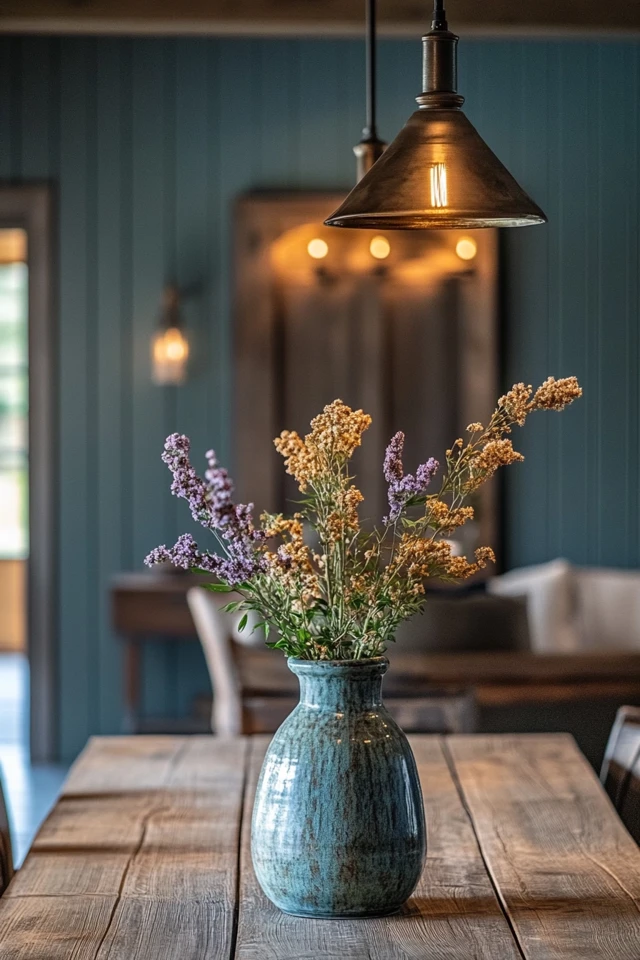Introduction
Warm lighting is the unsung hero of farmhouse interiors. While the reclaimed wood beams, cozy textiles, and shiplap walls steal the spotlight, it’s the lighting that creates the atmosphere. I learned this firsthand while working on my first farmhouse renovation. The space had all the charm—distressed furniture, a neutral palette, and rustic decor—but it felt cold and uninviting. It wasn’t until I swapped out the harsh, bright bulbs for warm-toned ones and added a few strategically placed lamps that the room transformed into the cozy retreat I’d been envisioning.
Lighting is one of the most impactful ways to shape the mood of a room, and in farmhouse design, it plays a crucial role in bringing out the warmth and character of the space. From soft, glowing pendants over the dining table to vintage-inspired sconces in the hallway, warm lighting enhances the textures, tones, and overall ambiance of your home.
In this guide, I’ll walk you through how to incorporate warm lighting into farmhouse interiors. Whether you’re planning a complete lighting overhaul or simply looking to enhance your existing setup, these ideas will help you create a cozy, inviting home that feels like a warm embrace.
The Importance of Warm Lighting in Farmhouse Design
Warm lighting isn’t just about aesthetics—it’s about creating an experience. It adds depth, coziness, and a lived-in feel that’s essential to farmhouse interiors.
How Warm Lighting Transforms a Space
- Enhances Texture: Soft, warm light highlights the natural textures of wood, stone, and textiles, adding depth and richness to the room.
- Creates Comfort: Warm tones mimic the glow of candlelight or a fireplace, evoking feelings of relaxation and comfort.
- Sets the Mood: From romantic dinners to cozy evenings, warm lighting creates an atmosphere that feels inviting and personal.
Pro Tip: Look for light bulbs with a color temperature of 2700K–3000K to achieve that perfect warm glow.
Types of Lighting to Use in Farmhouse Interiors
A layered lighting approach is key to achieving the perfect ambiance. This means combining different types of lighting to create a balanced and functional space.
1. Ambient Lighting
Ambient lighting provides the overall illumination for a room. In farmhouse interiors, it should feel soft and natural.
- Chandeliers: A rustic wood or wrought iron chandelier is perfect for farmhouse living rooms or dining spaces.
- Flush Mounts: Choose simple, vintage-inspired designs for bedrooms or hallways.
- Recessed Lighting: Use dimmable recessed lights for a subtle, even glow in kitchens or larger spaces.
2. Task Lighting
Task lighting provides focused illumination for specific activities, like reading or cooking.
- Pendant Lights: Hang a row of pendants with warm-toned bulbs over kitchen islands or dining tables.
- Table Lamps: Choose lamps with linen or burlap shades to diffuse light gently.
- Under-Cabinet Lighting: Add LED strips under kitchen cabinets for functional yet warm lighting.
3. Accent Lighting
Accent lighting highlights specific features or decor in the room.
- Wall Sconces: Use sconces to frame mirrors, artwork, or architectural details.
- Fairy Lights: String lights add a whimsical, cozy touch to bedrooms or outdoor spaces.
- Candles: Real or LED candles can create a soft, flickering glow that’s quintessentially farmhouse.
Materials and Finishes for Farmhouse Lighting
Farmhouse lighting is as much about the fixtures as it is about the light itself. Choosing the right materials and finishes can enhance the rustic charm of your space.
Popular Materials
- Wood: Distressed or reclaimed wood adds warmth and texture.
- Metal: Wrought iron, black steel, or brushed brass fixtures lend an industrial edge.
- Glass: Clear or seeded glass shades create a vintage-inspired look.
- Rattan or Woven Materials: Perfect for pendants or lampshades, these add a natural, organic element.
Finishes to Look For
- Matte black or oil-rubbed bronze for an industrial farmhouse vibe.
- Brushed brass or copper for a touch of elegance.
- Distressed white or gray finishes for a shabby-chic look.
Pro Tip: Mix materials for a balanced look—for example, a wood and metal chandelier or a glass pendant with brass accents.
Lighting Ideas for Specific Farmhouse Spaces
1. Farmhouse Kitchen
The kitchen is the heart of the home, and warm lighting can make it feel even cozier.
- Pendant Lights: Hang oversized pendants with warm-toned bulbs over the island or dining table.
- Under-Cabinet Lighting: Use warm LED strips to illuminate countertops and enhance the texture of natural wood or tile backsplashes.
- Chandelier: A rustic wood or iron chandelier adds charm above a farmhouse dining table.
2. Living Room
In the living room, lighting should enhance the cozy, relaxed atmosphere.
- Table and Floor Lamps: Place lamps with soft linen shades in corners or beside sofas.
- Wall Sconces: Use sconces to frame the fireplace or highlight artwork.
- Fairy Lights: String lights around a window or bookshelf for a whimsical touch.
3. Bedroom
Warm, soft lighting is essential for creating a serene and inviting bedroom.
- Bedside Lamps: Choose lamps with adjustable brightness for reading or winding down.
- Chandelier or Flush Mount: Add a small, rustic chandelier or a flush mount with a distressed finish for ambient lighting.
- Candles: Use flameless candles on nightstands or dressers for a romantic glow.
4. Bathroom
Farmhouse bathrooms benefit from warm lighting that feels soft and flattering.
- Vanity Lights: Opt for wall-mounted fixtures with glass shades and warm bulbs.
- Overhead Lighting: Use a small chandelier or flush mount for a touch of elegance.
- Accent Lighting: Add a small lamp or candle for a spa-like atmosphere.
Tips for Achieving the Perfect Warm Lighting
1. Use Dimmer Switches
Dimmer switches give you control over the brightness of your lighting, allowing you to adjust the ambiance based on the time of day or mood.
2. Choose the Right Bulbs
Look for bulbs labeled “soft white” or “warm white” with a color temperature of 2700K–3000K. Avoid cool-toned bulbs, which can feel harsh and out of place in farmhouse interiors.
3. Layer Your Lighting
Combine ambient, task, and accent lighting to create depth and versatility in your space.
4. Highlight Natural Materials
Use lighting to emphasize the beauty of natural materials like wood beams, stone fireplaces, or shiplap walls.
5. Add Candlelight
Candles, whether real or LED, add a soft, flickering glow that’s perfect for creating a warm and inviting atmosphere.
Picture Gallery

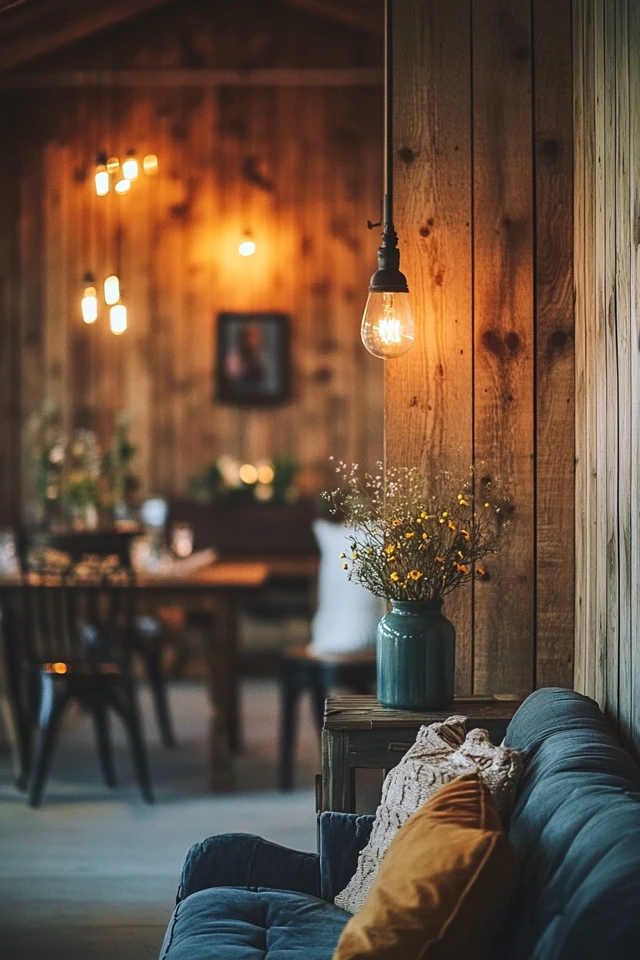
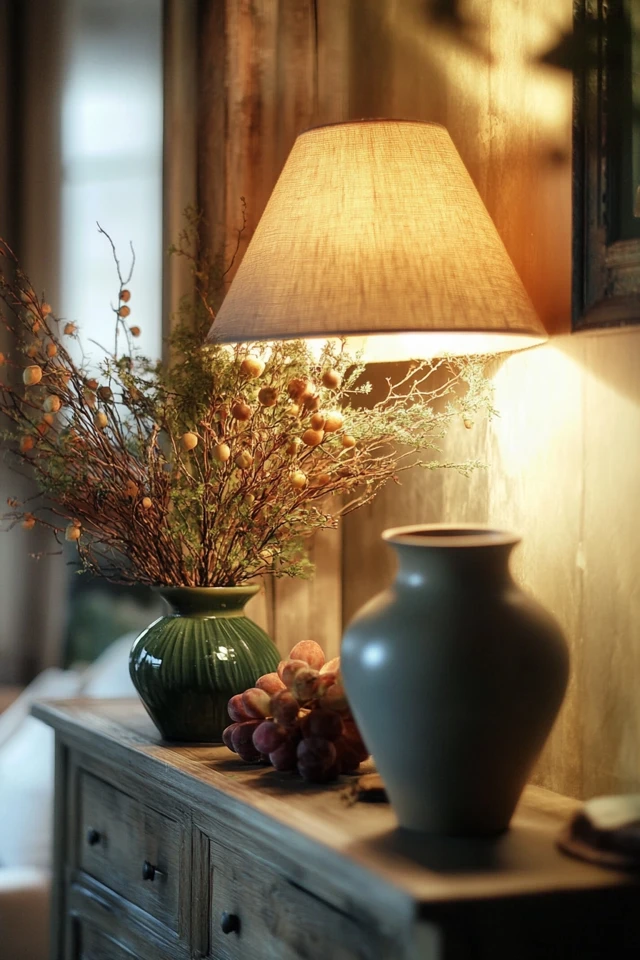
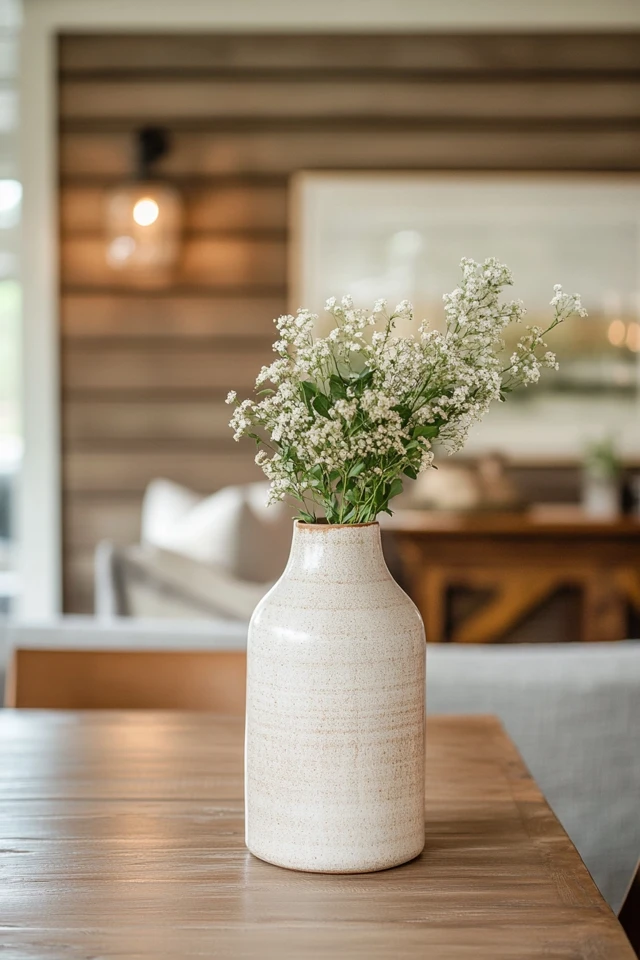
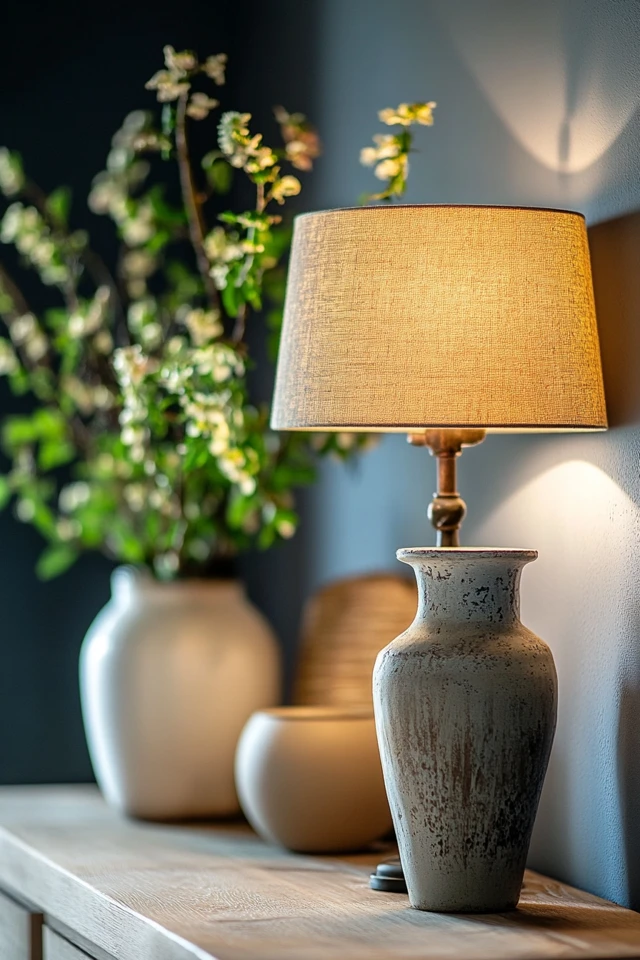
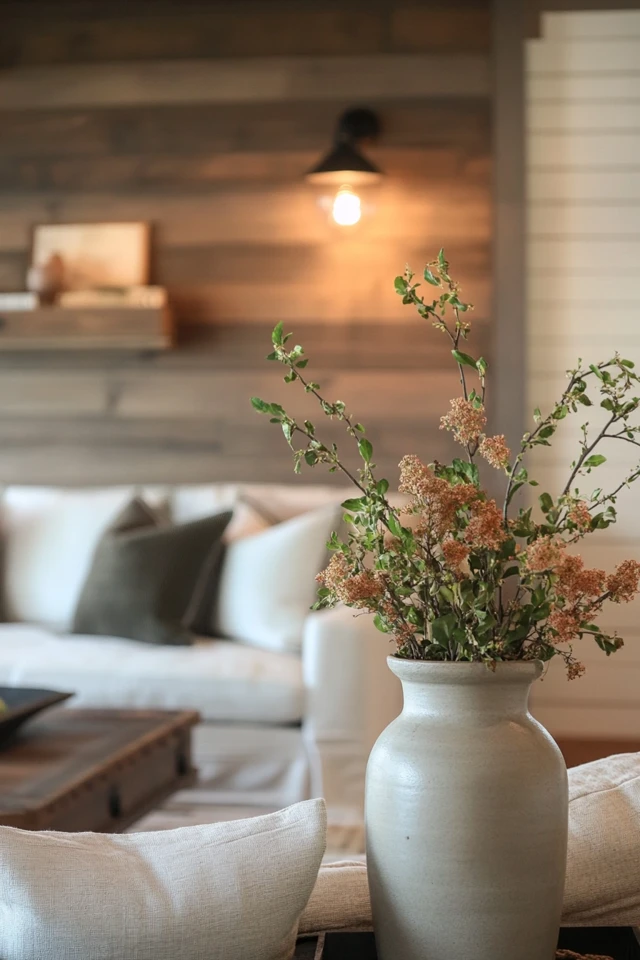
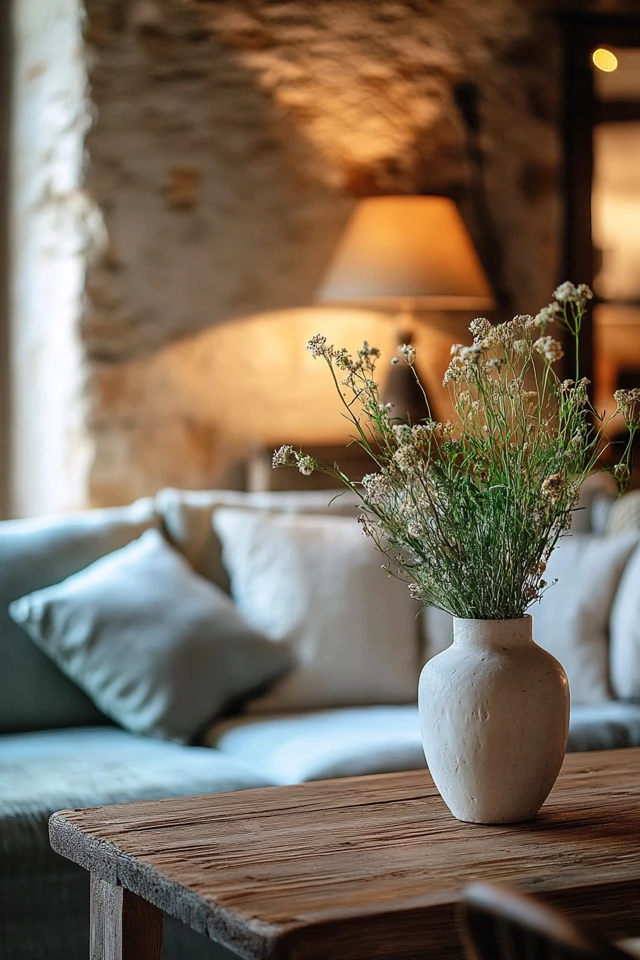
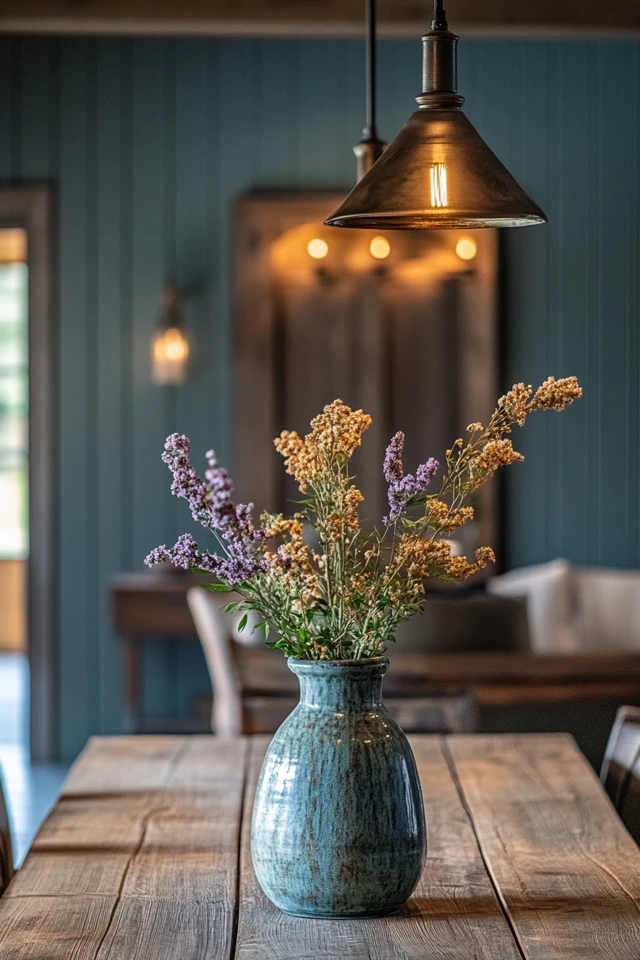
Common Mistakes to Avoid
1. Using Harsh, Cool Lighting
Cool-toned bulbs can make a farmhouse space feel stark and uninviting. Always opt for warm tones to maintain the cozy vibe.
2. Ignoring Dimmers
Without dimmers, your lighting can feel one-dimensional. Dimmers allow you to customize the brightness for different occasions.
3. Overcrowding with Fixtures
Too many fixtures can overwhelm the space. Focus on a few key pieces that complement your overall design.
Conclusion
Incorporating warm lighting into farmhouse interiors is about more than just illuminating a space—it’s about creating an experience. The soft glow of a well-placed light fixture can bring out the natural beauty of your materials, enhance the ambiance, and make your home feel truly inviting.
For me, warm lighting is the finishing touch that ties a farmhouse room together. It’s what makes the reclaimed wood beams feel richer, the cozy throw blankets even cozier, and the shiplap walls glow with character. Whether you’re hanging a rustic chandelier or adding a simple table lamp, the right lighting can transform your space in ways you never imagined.
So, grab those warm-toned bulbs, pick out a fixture that speaks to you, and start creating a farmhouse home that feels as warm as it looks. With the tips in this guide, you’ll be lighting up your space—and your life—in no time.
FAQ
1. What type of light bulbs should I use for warm lighting?
Choose bulbs labeled “soft white” or “warm white” with a color temperature of 2700K–3000K for a cozy glow.
2. Can I mix different lighting materials in one room?
Yes! Mixing materials like wood, metal, and glass adds depth and character to your lighting design.
3. How do I make my lighting adjustable?
Install dimmer switches or use lamps with adjustable brightness settings to customize your lighting.
4. What’s the best way to light a small farmhouse kitchen?
Use pendant lights over the island, under-cabinet lighting for tasks, and a small chandelier or flush mount for ambient light.
5. Can I incorporate LED lights into farmhouse design?
Absolutely! Choose warm-toned LED bulbs or strips to maintain the farmhouse aesthetic while enjoying energy efficiency.

